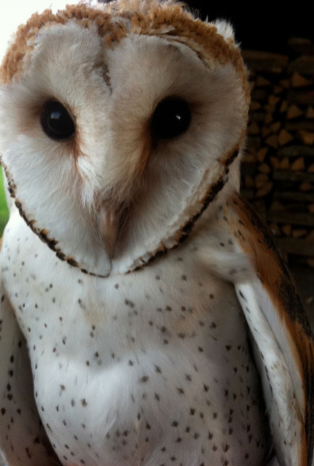Baby Owls Sleep Like Human Babies, Owlets Looked ‘Awake-Like’ During REM Sleep [PHOTO]

Besides being tiny, adorable and young, baby owls and baby humans have a lot more in common than previously thought.
A new study reveals that the baby birds have sleep patterns much like their human counterparts – where the majority of their sleep is spent in REM (known as Rapid Eye Movement sleep). As they grow older, less sleep is spent in this phase characterized by vivid dreams and awake-like brain activity.
"During this sleep phase, the owlets' EEG showed awake-like activity, their eyes remained closed, and their heads nodded slowly," Madeleine Scriba from the University of Lausanne said in a statement.
Scientists recorded 66 baby owls with varying ages in their sleep, using an electroencephalogram (EEG) sensors and movement data. As the owls aged, researchers found they spent less time in REM sleep.

Like the owlets, newborns spend more time in REM sleep than grownups. Approximately half of newborns’ sleep is spent in REM compared to just 20 to 25 percent of adult’s sleep. It remains a mystery as to why humans dream, but scientists know it begins when signals from an area of the brain known as the pons reaches the outer layer of the brain responsible for learning, thinking, and organizing information. Since it stimulates a region used for learning, scientists believe this may be a reason why infants spend much more time in REM than adults, according to the National Institute of Neurological Disorders and Stroke.
The same study also found a relationship between a specific gene and the owlet’s brain development. Large, dark spots produced by a gene in their feather follicles was linked with less REM sleep which might mean their brains develop faster than owlets that have lower levels of this gene.
“As in several other avian and mammalian species, we have found that melanic spotting in owls covaries with a variety of behavioral and physiological traits, many of which also have links to sleep, such as immune system function and energy regulation," Alexander Roulin from the University of Lausanne said in a statement.
Mammals have different ways of snoozing. Horses sleep in a standing position, the elephant, cow and giraffe sleep for an average of four hours, according to the Sleep Foundation.
Bird have a tendency to adjust their sleep schedule around predators. "Birds primarily sleep from an anti-predator point of view. Birds do sleep in vulnerable areas. If birds had a lot of REM sleep, they'd be putting themselves in danger," Charles Amlaner, Jr., PhD, Director of Animal Research at Indiana State University said.
Niels Rattenborg from the Max Planck Institute for Ornithology hopes the study’s results will shed light on “this naturally occurring variation in REM sleep during a period of brain development can be used to reveal exactly what REM sleep does for the developing brain in baby owls, as well as humans."
© Copyright IBTimes 2024. All rights reserved.





















